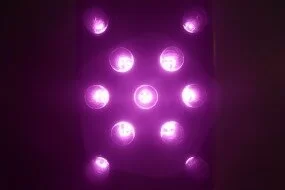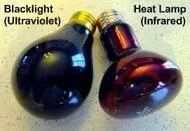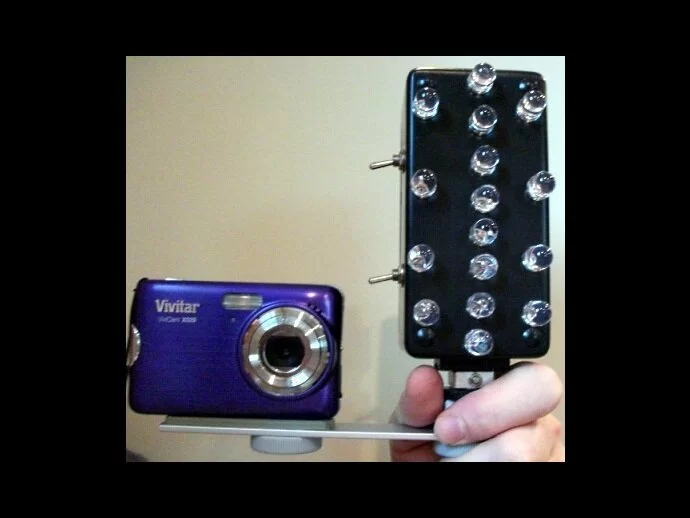Choosing an Infrared Illuminator: Finding the IR Light That Works for Ghost Hunting
When using a camcorder such as an older Sony with Night Shot capability or an Infrared (IR), Multi-spectrum (UV, IR) or Full Spectrum (IR-Vis-UV) camera for ghost hunting, you may be wondering what type of light to use to illuminate the darkness. Not knowing where to turn, many paranormal investigators end up wasting a lot of money by purchasing different lights through trial and error.
If you have a camcorder that sees in the dark, such as the Sony with Night Shot, the video camera will typically have a built-in Infrared (IR) light that provides some night vision capability. To enhance this, you will want to add a bigger Infrared illuminator to be able to see better and further in night time settings. Your goal is to make sure you purchase a light that casts enough Infrared light that the camera can see it (but is invisible to the human eye and maintains darkness). This will work well with full spectrum, multi-spectrum, and Infrared cameras.
 Infrared Illuminators: IR LEDs
Infrared Illuminators: IR LEDs
The Infrared light you purchase should have IR LEDs in it instead of being a battery-powered bulb such as a halogen. If the light does not have IR LEDs, it will have a round bulb with filament and be covered with a white light filter. Most of this type illuminator that we have tried work with the cameras mentioned in this article, but they cast an obnoxious “white spot” in the center of the beam from the bulb. This will unfortunately interfere with getting clear images in the dark. Stick with the IR LEDs if you are going battery-powered.
When choosing your Infrared light, pay attention to the size of the IR LEDs. There are typically two sizes: 5mm and 10mm. The bigger the bulb, the fewer of them are needed to cast more light. Smaller bulb units will require many IR LEDs to do the trick.
Rechargeable or Non-Rechargeable Batteries?
When selecting an IR LED light, there will be two basic kinds from which to choose: rechargeable and non-rechargeable. At first thought, the rechargeable Infrared light sounds like the way to go. However, this might not be the case dependent upon how you choose to use the video camera or full spectrum camera. The rechargeable IR illuminators typically hold between a 30-60 minute charge. This is fine if you purchase more than one light and use them consecutively or if you do not plan on recording hours worth of video. However, a rechargeable Infrared light may be perfect if you plan on taking photos for a short session during a ghost investigation while using a camera that can see in the dark (e.g. full spectrum, Infrared, multi-spectrum cameras) with Infrared lighting.
For many users, non-rechargeable Infrared lights that take throw-away batteries may present a better option. Some of these models work great because they seem to last longer and batteries can be easily replaced: All one has to do is bring extras to the investigation (something that is common practice anyhow). (If possible, finding an IR light that runs on a single 9-volt battery is our preference.)
If you find a battery-powered IR LED light that works well with what you are doing, then keep in mind that you can always purchase more and combine them to increase illumination for larger rooms or outdoor environments. Three lights used together at the same time emit three times the light as using only one light. And there will be times when one light may be too much in very small rooms. So, it is good to be able to scale-up the amount of light when necesssary.
 A/C Powered Infrared Illuminators Instead of Battery Powered?
A/C Powered Infrared Illuminators Instead of Battery Powered?
Still, another option is to use either an incandescent black light bulb or UV heat lamp bulb (found at pet stores for reptiles) as your IR Illuminator. Both are A/C powered, will light up a large space but become quite hot. Be sure to use a clamp light with insulated socket to guard against fires, and do not touch them while in use; or risk getting burned. The blacklights allow you to maintain a low-light environment but will make your Infrared and full spectrum cameras see everything (it will look like daylight to them). Also, incandescent bulbs are slowly disappearing, so stock up on those black light bulbs when you find them. See Full Spectrum Lighting.
With full spectrum cameras, you are not limited to just Infrared lighting. Some ghost investigators are creating their own lights made up of some UV (ultraviolet), IR (Infrared) and different colors of light from the visible spectrum (green, blue, etc), creating a “full spectrum” light. This might not be a bad idea, because the camera can only see what light is available to it.
There are lots of options for lighting. First determine how you wish to use the camera or camcorder that can see in the dark, then, choose the correct light to do the job. In the end, we recommend that you experiment to find the perfect light for your camera and unique situation.


